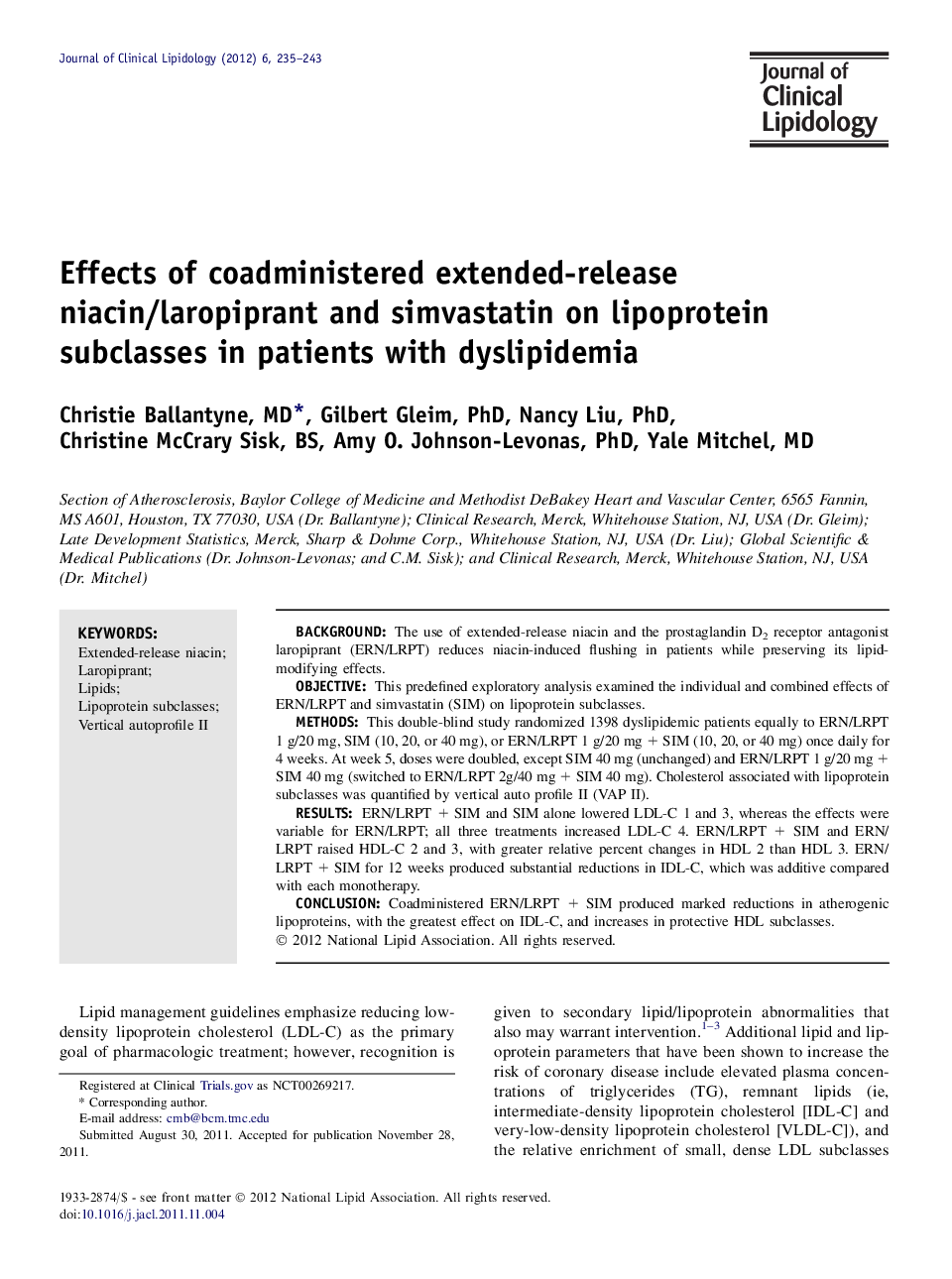| Article ID | Journal | Published Year | Pages | File Type |
|---|---|---|---|---|
| 5985916 | Journal of Clinical Lipidology | 2012 | 9 Pages |
BackgroundThe use of extended-release niacin and the prostaglandin D2 receptor antagonist laropiprant (ERN/LRPT) reduces niacin-induced flushing in patients while preserving its lipid-modifying effects.ObjectiveThis predefined exploratory analysis examined the individual and combined effects of ERN/LRPT and simvastatin (SIM) on lipoprotein subclasses.MethodsThis double-blind study randomized 1398 dyslipidemic patients equally to ERN/LRPT 1 g/20 mg, SIM (10, 20, or 40 mg), or ERN/LRPT 1 g/20 mg + SIM (10, 20, or 40 mg) once daily for 4 weeks. At week 5, doses were doubled, except SIM 40 mg (unchanged) and ERN/LRPT 1 g/20 mg + SIM 40 mg (switched to ERN/LRPT 2g/40 mg + SIM 40 mg). Cholesterol associated with lipoprotein subclasses was quantified by vertical auto profile II (VAP II).ResultsERN/LRPT + SIM and SIM alone lowered LDL-C 1 and 3, whereas the effects were variable for ERN/LRPT; all three treatments increased LDL-C 4. ERN/LRPT + SIM and ERN/LRPT raised HDL-C 2 and 3, with greater relative percent changes in HDL 2 than HDL 3. ERN/LRPT + SIM for 12 weeks produced substantial reductions in IDL-C, which was additive compared with each monotherapy.ConclusionCoadministered ERN/LRPT + SIM produced marked reductions in atherogenic lipoproteins, with the greatest effect on IDL-C, and increases in protective HDL subclasses.
